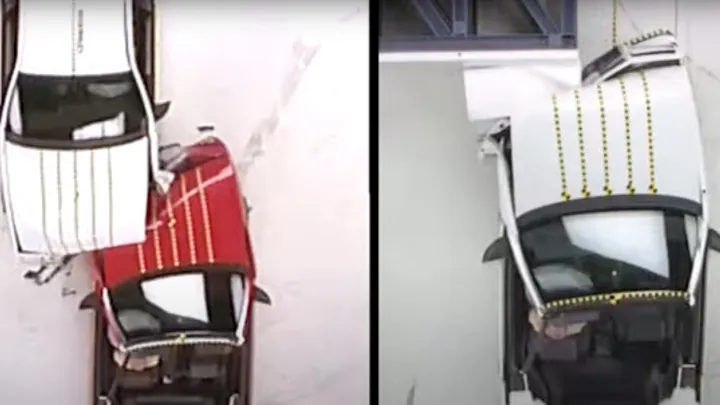
The Insurance Institute for Highway Safety occasionally updates its testing methods to keep pace with a rapidly evolving automotive industry, but there’s one thing that hasn’t changed with the new tests: Crash speeds. In a recent YouTube video, the IIHS detailed why it hasn’t increased crash-test speeds above 40 mph despite the fact that most highway drivers routinely hit much higher speeds.
Raul Arelaez, the VP of the IIHS Vehicle Research Center, said that the organization’s testing speeds align with the median speed of real-world crashes involving severe injuries.
“We know there are crashes that are more severe, but we are capturing the bulk of the total number of crashes. Most crashes are very low severity,” he said in the video.
Another reason for keeping speeds where they are is the fact that impact force doesn’t increase in a linear relationship with speed. Arbelaez pointed out that increasing speeds from 40 to 50 mph would bump crash energy by 50 percent and said that focusing on higher crash-test speeds could come at the expense of safety at lower speeds.
The IIHS updated its testing methodology in 2024, making it more difficult for vehicles to earn a Top Safety Pick or Top Safety Pick +. Pedestrian and crash prevention systems must now perform well in both day and nighttime, while headlights have to earn “Good” or “Acceptable” scores for the vehicle to qualify for an award. Additionally, the organization recently released a report showing that most advanced and semi-autonomous driving assistance systems fail to adequately monitor driver behavior and safety.
[Image: IIHS via YouTube]
Become a TTAC insider. Get the latest news, features, TTAC takes, and everything else that gets to the truth about cars first by subscribing to our newsletter.

